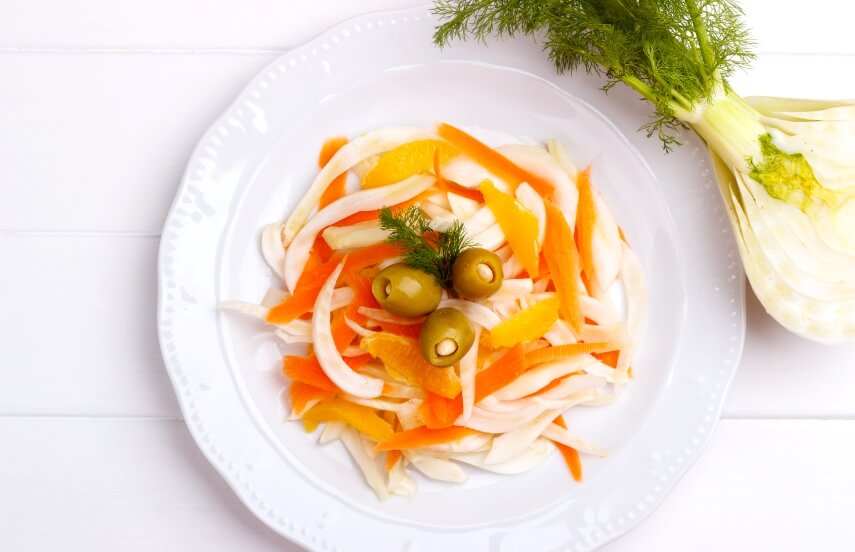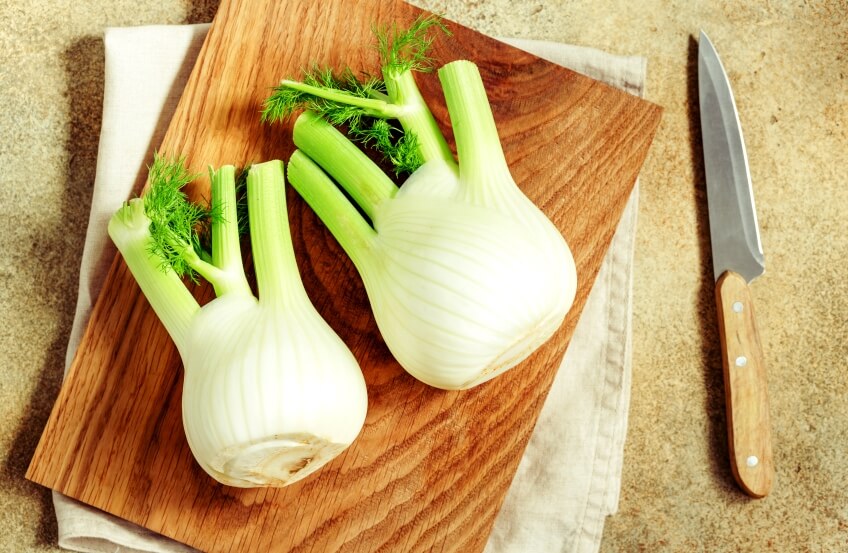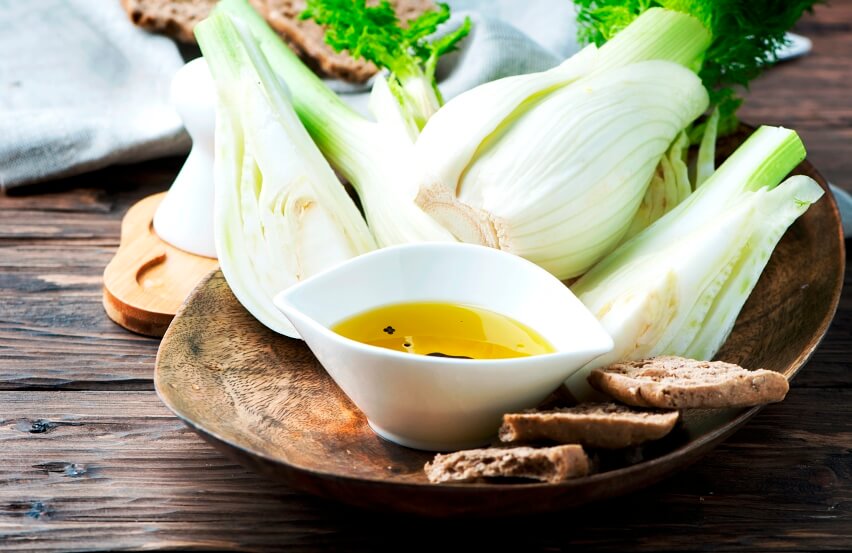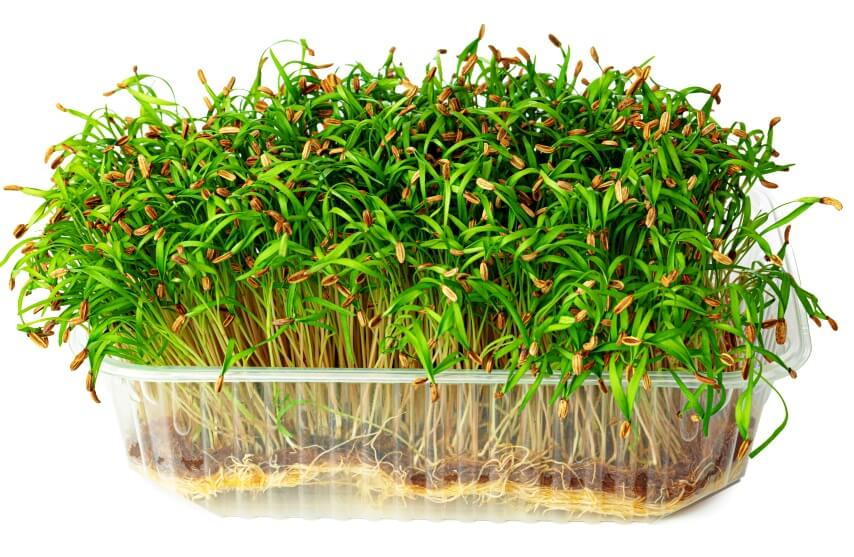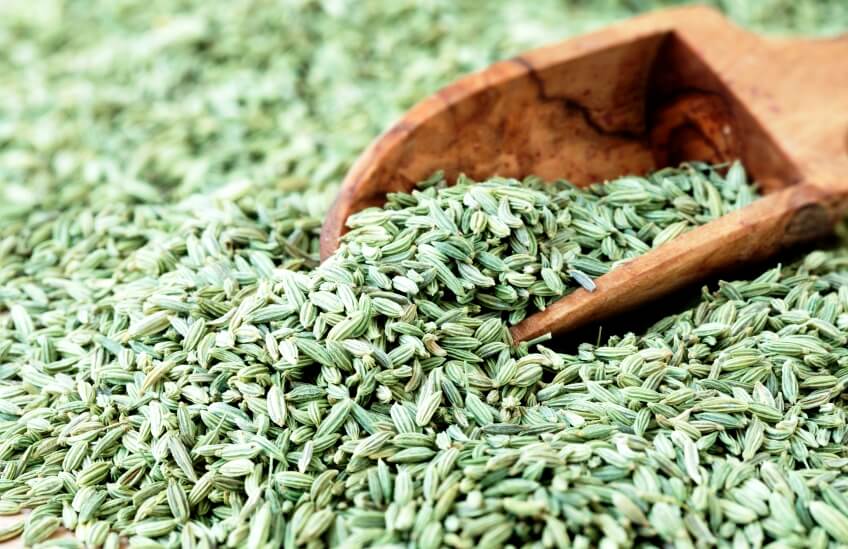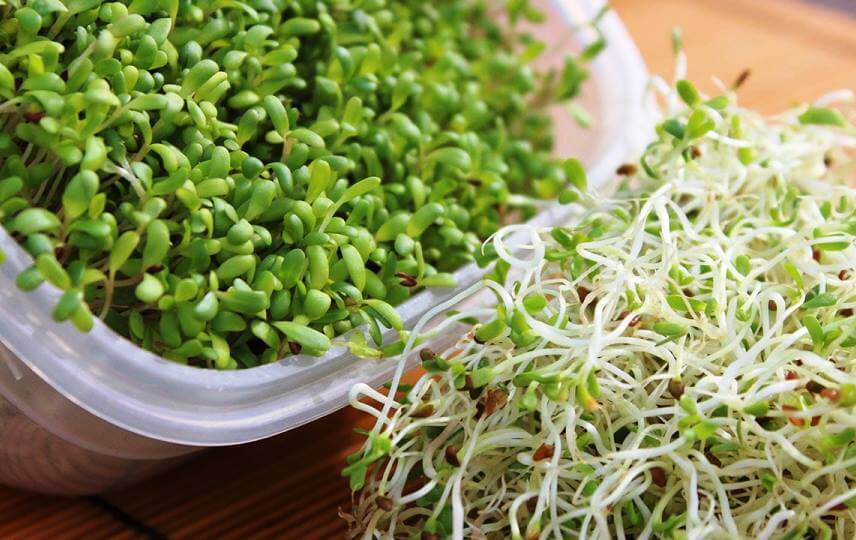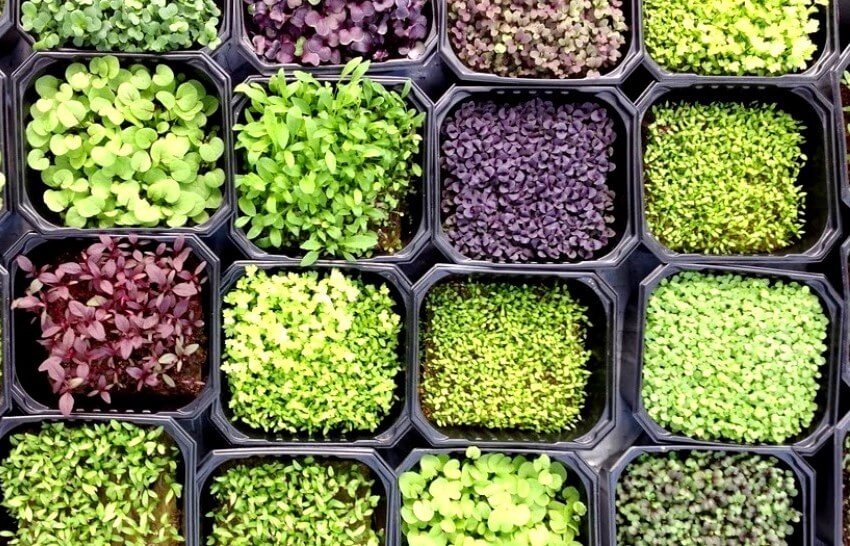The flavor of fennel microgreen is zingy, spicy, and somewhat licorice- or anise-like. It tastes great when added to salads and sandwiches. It serves as a flavorful and fresh substitute for herbs in seafood meals, and may also be blended into soups and dips. Micro fennel is packed with vitamins, fiber, antioxidants, and potassium, so adding it to recipes is a sneaky way to up the meal’s nutritional value.
If Like to know more about microgreens, check these articles:
<<What Are Microgreens >> and <<How Much Microgreens To Eat Per Day>>
Fennel History & uses
Ancient Chinese believed fennel was a cure for snake bites, while the Egyptians used it as food and medicine.
Fennel seeds have an anise-like flavor and are aromatic and sweet. Fennel’s blooms and all other aerial parts can be eaten. Fennel seeds are added to sweet pickles and sauerkraut, as well as baked into bread, biscuits, stuffing, and Italian sausages. Fennel leaves can be used as a garnish or added to salads, olives, fish, and snails. Stems can be grilled with fish, meats, and vegetables.
The fennel seeds’ essential oil is used to make fragrances, soaps, medicines, and cosmetics. Additionally, liqueurs like sambuca, non-alcoholic beverages, toothpaste, and prepared foods like meats, ice cream, sweets, baked products, and condiments can all be flavored with fennel oil, seeds, or extracts [1].
Fennel microgreens overview
| Family | Apiaceae |
| Nutrition | Vitamin C, E, and K, antioxidants, potassium, and fiber |
| Average days to germinate | 7 to 14 days |
| Average days to harvest (after germination) | 10 to 14 days |
| Difficulty | Medium |
Nutritional value and health benefits of fennel microgreens
Consuming fennel microgreens is a wonderful method to increase the nutritional value of your diet. Vitamins C, E, and K, antioxidants, potassium, and fiber are all present in fennel microgreens.
Numerous health advantages can be obtained from fennel microgreens and seeds. The following are some of the most important fennel microgreen benefits [2]:
Fennel salad with orange
High in antioxidants
The antioxidants and vital plant components found in fennel microgreens and seeds may be what makes them so beneficial.
Potent antioxidants, including chlorogenic acid, limonene, and quercetin, are abundant in all parts of the fennel plant.
Anti-inflammatory polyphenol antioxidants have a significant positive impact on your health. Studies show That there is a decreased chance of developing chronic illnesses like heart disease, obesity, cancer, neurological disorders, and type 2 diabetes in persons who consume diets high in these antioxidants.
Healthy heart
Fennel microgreens and seeds are rich in fiber. Fiber can lower several heart disease risk factors, including high cholesterol. As a result, consuming fennel microgreens may have many positive effects on heart health.
High-fiber diets have been associated with a lower risk of heart disease. Magnesium, potassium, and calcium are elements found in fennel and its seeds that are crucial for maintaining heart health.
Anti-cancer effect
Fennel has a variety of potent plant chemicals that may offer protection from cancer and other chronic diseases.
For instance, it has been discovered that anethole, one of the key active ingredients in fennel seeds, has cancer-preventive qualities.
Fennel flower
Good for breastfeeding women
Fennel has been demonstrated to have galactogenic properties; this means that they aid in boosting milk secretion. According to research, certain components of anethole, including dianethole and photoanethole, are what give the plant its galactogenic properties.
Fennel may boost the blood levels of prolactin, a hormone that signals the body to produce breast milk and milk secretion.
How to grow fennel microgreens
It takes 7 to 14 days for the fennel to germinate. You can harvest them almost two weeks after germination. In order to grow fennel microgreens successfully, you need to take the following steps:
1) The germination of fennel seeds might be slow. It could take up to two weeks for these seeds to sprout. You can soak the seeds up to 24 hours in advance if you want to grow your own microgreen faster
2) Select a tray or container with drainage holes, and fill it with an organic potting mix designed for microgreens. Wet the soil, scatter the Fennel seeds over the soil’s surface, and then cover them with a light layer of dirt.
3) water the soil regularly, but remember that fennel microgreen is sensitive to too much and too little moisture. The easiest way to maintain moisture while the plants are still young is to mist the soil with a spray bottle. You can use bottom-watering as the fennel microgreens start growing well.
4) After germination, Select a sunny location for your indoor fennel microgreen garden. Near a window with southern exposure could be a good choice. You can also use grow lamps if your home lacks natural sunlight.
Fennel microgreen seeds
5) Fennel microgreens will be available for harvest in 10 to 14 days. Cut them a half-inch above the ground with a pair of sharp kitchen shears. Remove any filth by rinsing. Serve and consume them immediately. Young fennel shoots complement salads, dips, and seafood dishes because of their mild, anise-like flavor.
6) Once your fennel microgreens have been consumed, you can try growing other herbs and vegetables as microgreens. Top choices include sunflower shoots, pea microgreens, Swiss chard microgreens, micro basil and radish microgreens.




